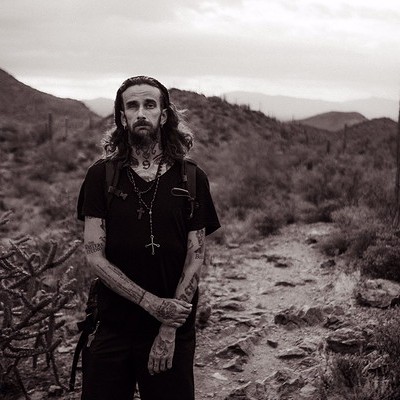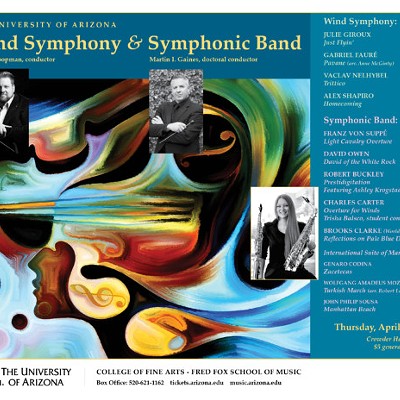Sure, many critics tend to regard the verse as the highest literary form, even if we end up writing about, say, the new, young, hot-shit novelist. Ultimately, this obsession with popular literary products is unhelpful, further eroding the potential for someone to pick up a collection of verse, and for a very simple reason: If book critics ain't talking about the stuff, how can it be any good?
Fortunately, there remain a handful of academic publishers--particularly in the Southwest, with the UA and University of New Mexico presses--continuing to bring out beautiful books of verse, no matter the ongoing literary fetish for trendy memoirs and assorted claptrap. The UA possesses a keen eye for talent; witness the simultaneous release of two new collections by American Indian poetesses: Luci Tapahonso's A Radiant Curve: Poems and Stories, and Ofelia Zepeda's Where Clouds Are Formed.
First, let's discuss Tapahonso, a writer born on a Navajo reservation who explores her heritage and contemplates the sacredness of life in A Radiant Curve. The book features nearly 30 prose and poetry pieces. After a short tone poem ("The beginning was mist"), she launches into an account of life that's largely vibrant and positive, if somewhat tinged with melancholy. Life's meanings are evident in the natural world as in "The warp is even: taut vertical loops"
between our father and the earth.
Today I begin anew:
in the pre-gray dawn the air is moist.
As I walk, my footsteps echo in the still morning:
damp, fragrant circles appeared overnight on the cold driveway.
Soon they will vanish with the sun's first rays,
but now I breathe the sweet dampness.
This motif of the difficult yet rewarding pleasures inherent in tracing a path back to one's ancestors recurs throughout, making each segment of Curve a necessary, elegant extension. Indeed, Tapahonso's memory poems not only explain, for instance, the First Laugh ceremony of a Diné baby (as with the title poem), but also outline such tasty rituals as the recipe for baking náneeskaadí (tortilla bread). There is real joy in this work, as much joy as there is sadness and grief in a poem like "Elegy for My Younger Sister," which describes the food and love that entered the house after a burial.
Having read plenty of contemporary poetry releases in 2008, I can confirm that Tapahonso's Curve will creep its way into your heart and stay there. Be sure and note the audio CD included with the book, too, wherein the author reads aloud from many of the poems and prose pieces gathered here. Tapahonso is not a manic performer, but drop this CD into your stereo at home while doing yoga or cooking, and you'll be seduced.
Seduction is the least of poet Zepeda's obstacles in Where a Clouds Are Formed, a book that is, in certain respects, the total opposite of Curve. Zepeda is a Tohono O'odham poet and poet laureate of Tucson. Hardly a concentrated dose of doom and gloom as its title suggests, Clouds lifts the veil from the face of our reality, identifying irony and dark humor in places Tapahonso perhaps tends to eschew. Take, for instance, the entirety of Zepeda's "Tsegi Overlook":
menu item at the Junction Café.
Three scrambled eggs with jalapeno jelly.
Not meant for the weak of heart.
We have oatmeal and toast on this cold
morning.
Clouds isn't all about muddying the waters of perception, either. It's a book that sings with the power of Zepeda's native language, and with the penetrating knowledge that very often, the greatest moments in life emerge from the smallest things.
If you'd like to enjoy these poets reading aloud from their new books, let us suggest you attend the book-release party for both books at the UA Poetry Center on Thursday, Oct. 23. Reading the work of these fine bards is one thing; hearing their voices is another and likely well worth the admission price of, well, free. Do bring money to buy books and get them signed, though.










